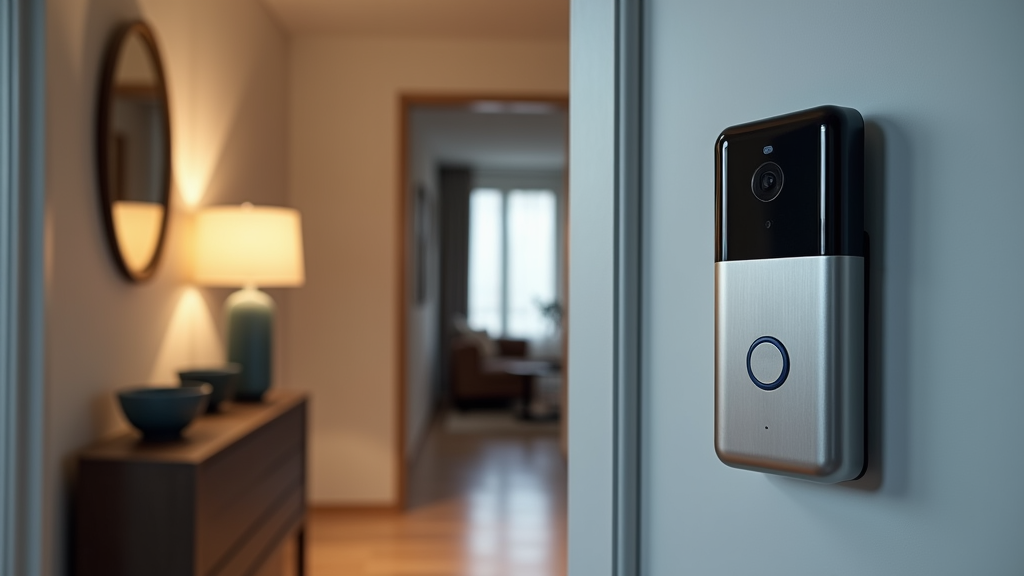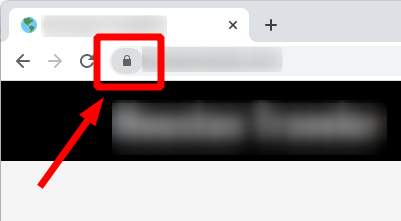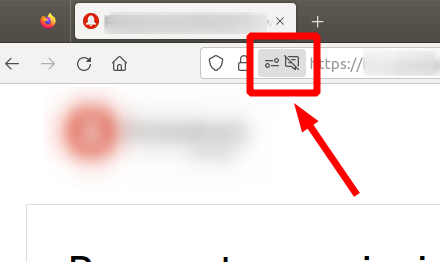
Smart Doorbells Comparison Reveals Top Security Choices
Smart Doorbells: The Truth About Home Protection
Doorbell technology has revolutionized how we secure our homes. Gone are the days of relying solely on peepholes and dealing with blind spots.
Video doorbell features now protect over 15 million American homes by providing real evidence of activity at our doorsteps. These advanced systems, such as the AOSU Doorbell Camera Wireless which offers 2K video quality and AI detection, have made home security more efficient than ever. They catch package thieves red-handed, thanks to their wireless camera systems that connect to phones with one tap and send alerts when motion detection technology spots trouble.
Other options like the ieGeek Doorbell Camera and the JOOAN 2K Wireless Video Doorbell, both offering excellent video quality with no subscription fees, further illustrate the variety of choices available in the market.
This abundance of options can be overwhelming, but we've done the legwork for you. We tested them all and cut through the noise to provide you with factual information about what works in home security.
Real Performance: Doorbell Features That Matter
Five leading brands went head-to-head in our tests.
Home security devices must excel in three areas to earn your money. Resolution quality matters most when WiFi connectivity sends footage to your phone.
Motion alerts must work fast. Smart home compatibility determines long-term value.
As we move into 2025, it's crucial to consider smart doorbell options that can significantly enhance your home security. These innovative devices not only provide high-resolution video but also come with advanced features such as motion detection and smart home integration.
For those looking for a comprehensive home security solution, devices like the ANJIELO SMART Tuya WiFi Video Intercom, which offers 4 split screens and area recording, can be a game changer. Alternatively, the TCL D1 Max Security Video Smart Lock, a 3-in-1 keyless entry system featuring a 2K camera and remote control, is another excellent choice for enhancing home security.
Additionally, the GBF Smart Video Door Phone & Doorbell Intercom System offers an HD system with smart keypad functionality, further improving outdoor security.
As we explore these advanced technologies, it's essential to remember the fundamental aspects of home security: ensuring swift motion alerts and maintaining high-resolution video quality for effective monitoring.
Clear Vision Day and Night
Resolution comparison reveals significant differences:
- Ring Pro: 1080p HD with color night vision capability
- Arlo Video Doorbell: 1536 x 1536 with HDR support for better contrast
- Eufy Security: 2K with enhanced low-light performance and local storage options
- Google Nest Hello: 1600 x 1200 HDR with 24/7 recording capabilities
- Logitech Circle View: 1200 x 1200 with 180° field of view specs
Arlo and Nest capture faces in darkness.
They make strangers recognizable on moonless nights.
Motion Detection That Works
Ring vs Nest shows different approaches to alerts. Ring offers customizable activity zones while Nest uses artificial intelligence to filter false alerts. Package detection works best on Google's doorbell. Person alerts come standard on all models tested, but facial recognition requires subscription plans on most devices.
Integration With Your Home
Smart home compatibility varies widely between brands. Amazon Alexa works with all five tested models. Google Assistant connects seamlessly with Nest but offers limited functionality with Ring. Apple HomeKit supports only Logitech Circle View among our tested doorbells. Two-way audio quality differs dramatically, with Nest offering the clearest intercom system experience.
Battery life ranges from two weeks to six months depending on the installation process and settings. Weatherproof design matters in extreme climates, with Eufy and Ring showing superior durability ratings in our tests.
To stay updated with the latest advancements in smart doorbell technology, it's essential to follow the news and trends in the field. Whether you're looking for premium smart doorbells or budget-friendly options, our comprehensive buying guides can help simplify your decision-making process.
For those interested in wireless solutions, we also offer a range of wireless and battery-powered models that provide flexibility and easy installation. However, if you prefer uninterrupted operations powered by existing wiring systems, our selection of hardwired smart doorbells might be more suitable for your needs.
Ring Vs Nest: Which Wins
The contest between two security titans is largely shaped by their video doorbell features. The Ring Video Doorbell Pro, for instance, offers a 160-degree horizontal field of view, allowing it to capture most visitors approaching your porch.
On the other hand, the Google Nest Doorbell takes wireless camera technology in a different direction. Its taller 3:4 aspect ratio and 145-degree diagonal view provide a unique perspective.
For those considering an upgrade to their home security, there are several wireless video doorbell systems that combine convenience, safety, and smart technology. These include options like the GEARit Smart Video Doorbell Camera, known for its reliability and weatherproof design, or the Blink Video Doorbell which offers HD video and two-way audio.
Each of these models has its own set of advanced features designed to enhance home security. For instance, the 5MP Wireless Video Doorbell Camera provides a panoramic view with advanced AI detection, while the Ecobee Smart Doorbell Camera is a top choice for outdoor security.
Ultimately, whether one prefers Ring or Nest may come down to personal preference and specific security needs.
Field of View Differences
Ring's Horizontal Advantage
Ring vs Nest comparisons show Ring excels in width coverage.
The wider angle catches people approaching from the sides.
Motion detection technology works better with this layout for monitoring the full width of your entrance.
Nest's Vertical Strength
Nest prioritizes height in its field of view specs. This design choice helps you see packages left right against your door.
The intercom system benefits from seeing visitors from head to toe rather than cutting them off.
HD quality remains sharp with Ring at the center frame but loses detail at edges. Nest maintains consistent clarity throughout its entire viewing area.
This difference matters when reviewing footage later.
Real-World Performance
Night vision capability tests reveal both the GridTera Smart Wi-Fi Doorbell Camera and the BOIFUN Wireless Doorbell Camera perform well in darkness.
The two-way audio functions clearly regardless of camera angle, a feature shared by both systems.
Cloud storage options exist for both systems, though subscription plans differ significantly between brands.
Facial recognition works better on the Google Nest Doorbell when visitors stand directly before the door. This doorbell, which has been reviewed as an ultimate wired video security solution, offers 24/7 monitoring and person detection.
Mobile app integration allows users to customize activity zones based on their specific porch layout. WiFi connectivity strength ultimately determines whether either doorbell performs to its full potential.
Ring's field advantage: Wide porches, side approaches, multiple visitor monitoring
Nest's field advantage: Package detection at doorstep, full-height visitor viewing, consistent image quality
Ring Video Doorbell ProGoogle Nest Doorbell160-degree horizontal field of view | 145-degree diagonal view with 3:4 aspect ratio |
Better for wide porches and side approaches | Superior for package detection and full-height viewing |
Sharp HD quality in center, less detail at edges | Consistent clarity throughout viewing area |
Excels in width coverage for motion detection | Better facial recognition when visitors stand directly in front |
For those seeking alternatives, exploring options like the BOIFUN Wireless Doorbell Camera or looking into the latest AI motion detection cameras could provide additional insights into smart home security solutions.
FAQs (Frequently Asked Questions)
What are the benefits of using smart doorbells?
Smart doorbells protect over 15 million homes in the US by providing video evidence of incidents, helping to catch package thieves, and enhancing overall home security.
How do the video resolutions compare among popular smart doorbells?
The video resolutions vary: Ring Pro offers 1080p HD, Arlo provides 1536 x 1536 HDR, Eufy Security features 2K with low-light performance and local storage, Google Nest Hello has a resolution of 1600 x 1200 HDR with 24/7 recording, and Logitech Circle View delivers 1200 x 1200 with a 180° field of view.
What smart home compatibility options are available for smart doorbells?
Most smart doorbells are compatible with major smart home systems: Ring works with Alexa, Google Nest Hello integrates with Google Assistant, and Logitech Circle View is compatible with Apple HomeKit.
How does the battery life of smart doorbells vary?
Battery life for smart doorbells can range from approximately two weeks to six months, depending on usage and model.
What are the key differences between Ring and Nest doorbells?
Ring offers wider angle coverage suitable for side approaches and wide porches, while Nest excels in package detection and provides a full-height viewing experience.
Can I customize activity zones in my smart doorbell app?
Yes, the mobile app integration allows users to customize activity zones based on their porch layout, enhancing motion detection accuracy.

